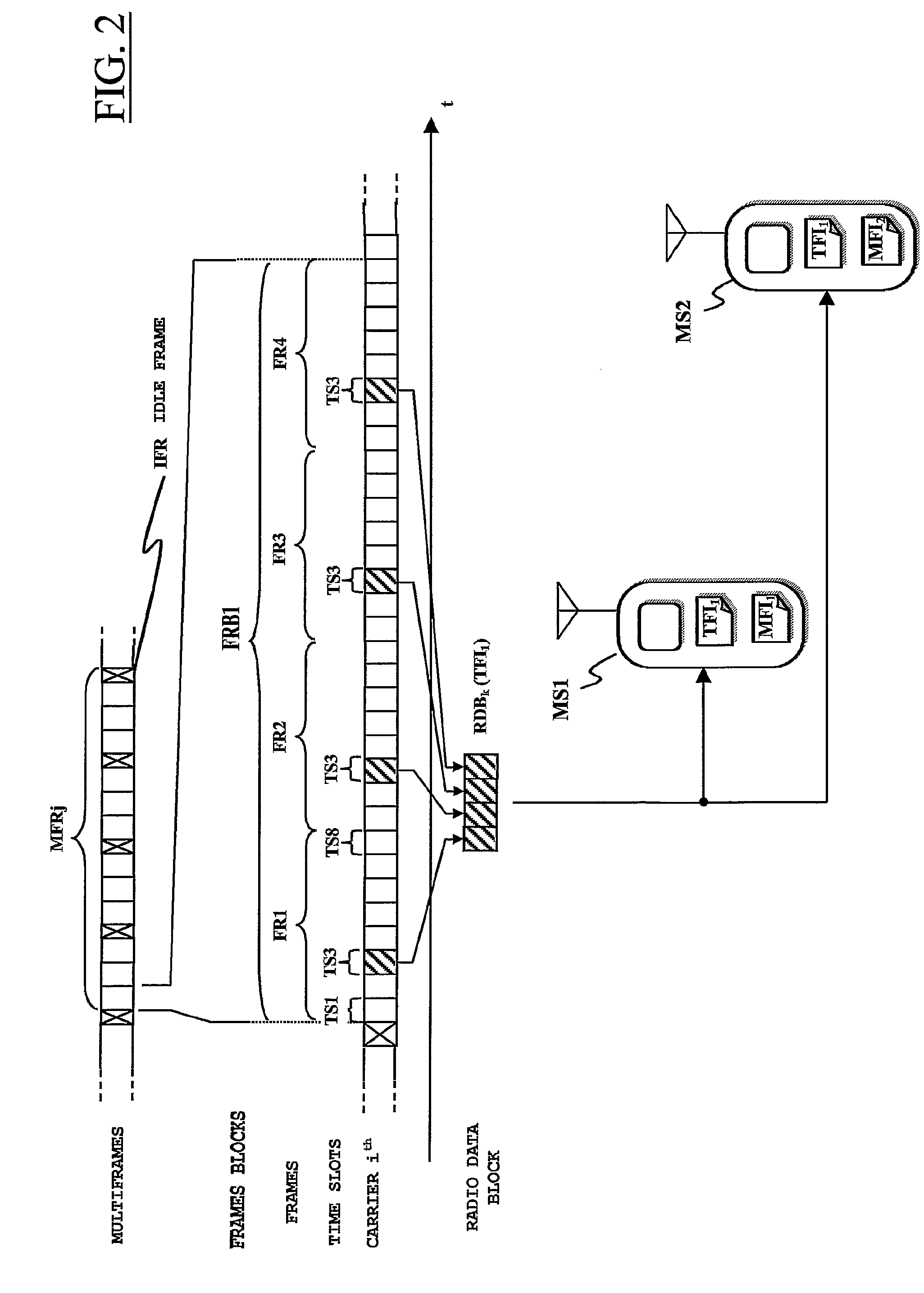Method and system for distributing multimedia contents through a wireless communications network, particularly a mobile telephony network
a wireless communications network and multimedia content technology, applied in the field of wireless communications networks, can solve the problems of limiting the bandwidth that can be allocated for a given user, poor data exchange capabilities, and limiting the possibility of multiple users simultaneously accessing available gpr services
- Summary
- Abstract
- Description
- Claims
- Application Information
AI Technical Summary
Benefits of technology
Problems solved by technology
Method used
Image
Examples
Embodiment Construction
[0077]With reference to the drawings and, particularly, to FIG. 1, a cellular mobile communications network 100, particularly a GSM network, is schematically shown.
[0078]The mobile communications network 100 comprises a plurality of Base Station Subsystems (BSSs), each one providing coverage for cellular communications in a respective geographic region.
[0079]The generic BSS comprises a plurality of Base Transceiver Stations (BTSs), each one covering a respective geographic area within the region covered by the BSS; the number of BTSs in a BSS may be in the practice rather high but for simplicity of the drawing, only four BTSs BTS1, BTS2, BTS3 and BTS4 (pictorially represented by an antenna) with an associated cell CELL1, CELL2, CELL3 and CELL4 (schematically depicted as an area surrounded by a dashed circle) are shown in FIG. 1. The generic BTS communicates with users' Mobile Stations (MS), typically cellular phones, which are located in the BTS's cell, such as the MSs MS1 and MS2 w...
PUM
 Login to View More
Login to View More Abstract
Description
Claims
Application Information
 Login to View More
Login to View More - R&D
- Intellectual Property
- Life Sciences
- Materials
- Tech Scout
- Unparalleled Data Quality
- Higher Quality Content
- 60% Fewer Hallucinations
Browse by: Latest US Patents, China's latest patents, Technical Efficacy Thesaurus, Application Domain, Technology Topic, Popular Technical Reports.
© 2025 PatSnap. All rights reserved.Legal|Privacy policy|Modern Slavery Act Transparency Statement|Sitemap|About US| Contact US: help@patsnap.com



